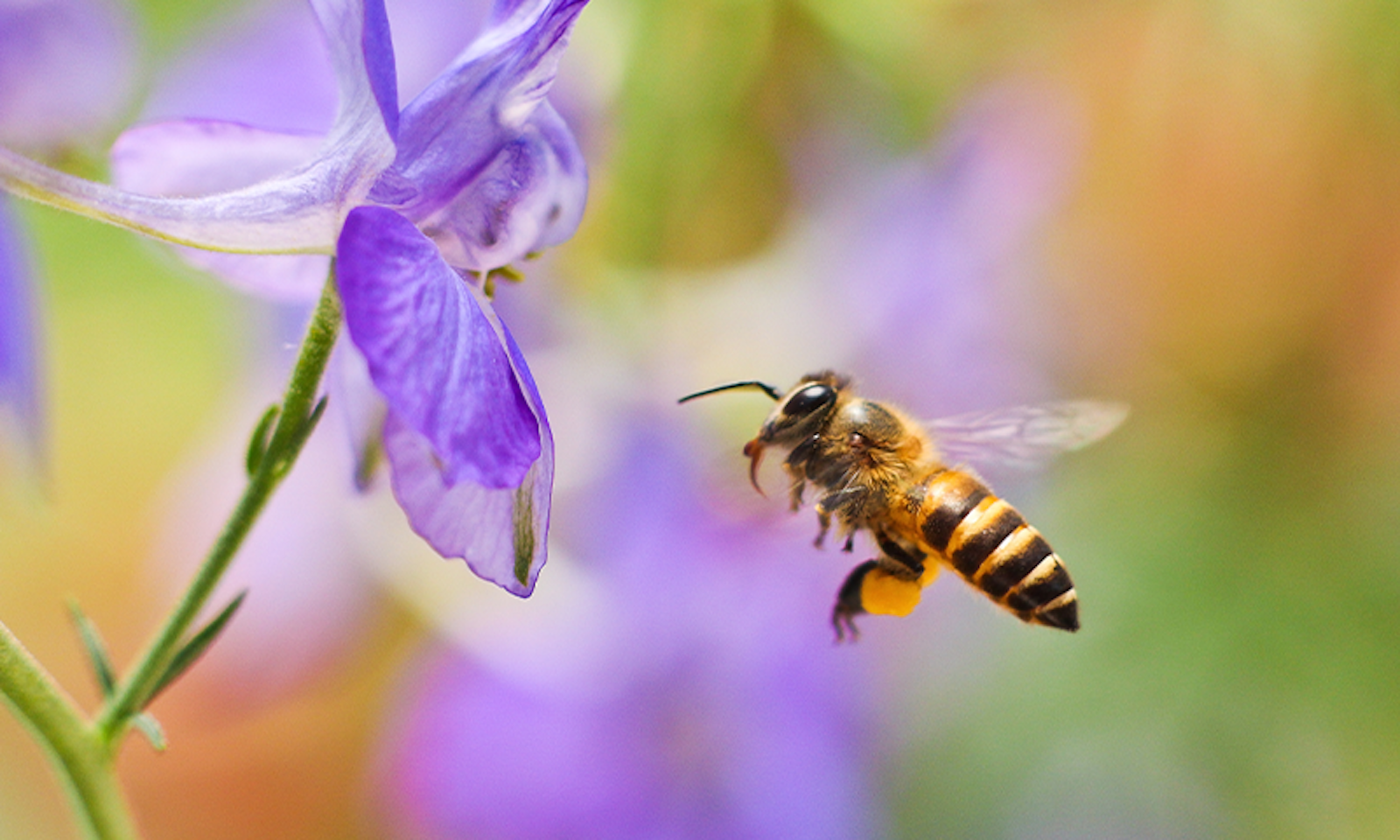When foraging for flowers, bees search for the familiar scents that blooms puff out into the air to attract them. Scientists call these little fragrant air pockets “odor plumes.” Once bees detect an odor plume, they start following it, flying from side to side to navigate to wherever the odor is strongest—scientists call this “casting”—until they land on a flower.
“If you think of a flower, it’s basically acting as a message beacon,” says Ben Langford, an atmospheric scientist at the UK Centre for Ecology & Hydrology, based in the United Kingdom, whose team studies how insects pollinate plants. “It’s sending out a signal to attract these pollinators.”
But human pollution—in particular ground-level ozone—is messing with the odor plumes bees love, new research published in the journal Environmental Pollution shows. Ground-level ozone, which is different from ozone found in the stratosphere, is generally produced by photochemical reactions between two classes of air pollutants: nitrogen oxide gases (emitted by cars, factories, industrial furnaces, and boilers) and volatile organic compounds (released by chemical plants, gasoline pumps, oil-based paints, autobody shops, and print shops).
Ozone pollution makes it much harder for bees to forage.
The intricate relationship between flowering plants and their pollinators, including bees, has evolved over millennia, and is vital not only to all ecosystems, but also to human agriculture and crop production. An estimated 75 percent of the world’s flowering plants and some 35 percent of the food crops humans grow depend on pollinators to produce harvests. Although bees aren’t the only pollinators, more than 3,500 species of bees help ensure humans have food on their plates.
The odor plumes flowers emit are usually strong but short lived—and for a reason. A strong odor, which results from a high concentration of fragrant compounds, sends a powerful message to the bees. But as the plume drifts away from the flower, there’s no reason to send this signal anymore, as it would route the bees into the wrong direction. So the fragrant molecules quickly react with other compounds in the air and fall apart.
“This is why plants generally tend to have more reactive compounds that make up their scent,” Langford says. “If they don’t react away, that background concentration of those chemicals will just build up and then the bees won’t be able to distinguish the plume from the background.” But in the presence of ozone, the plumes degrade much faster than they normally would. Langford’s team wanted to understand how much faster they degrade, and what impact that has on the bees’ ability to follow a scent.
For their study, researchers trained the bees to recognize the odor blend of several aromatic compounds. After being exposed to the smell, the bees received a sugary reward, so they learned to associate that scent with food. Then researchers investigated how the presence of ozone affected their ability to follow that scent.
Because ozone itself is damaging to bees, researchers couldn’t expose the insects to it directly. Instead, they first used a wind tunnel—a tube about 100 feet long—to learn how ozone changed the size and shape of odor plumes; they found that plumes degraded much faster on the edges than in the middle. Then they recreated the plumes in the corresponding concentrations in the lab (but without ozone) and watched how the bees fared following the scent they had memorized.
“We wanted to separate the effect of degradation of the odor plume from any direct toxic effect,” says Langford.
The research showed that ozone pollution makes it much harder for bees to forage. In fact, bees living in highly polluted areas could likely starve, exacerbating their other woes, such as Colony Collapse Disorder. First recognized in the early 2000s, Colony Collapse Disorder is a phenomenon in which the adult honeybees disappear from the hives, almost all at the same time, which leads to a population collapse.
The only way to address the issue of contaminated odor plumes, Langford notes, is to reduce the amount of ozone in the air. It’s not just a matter of helping bees find food. It’s a matter of helping bees make food for us, too. ![]()
Lead image: Apinan / Shutterstock
































